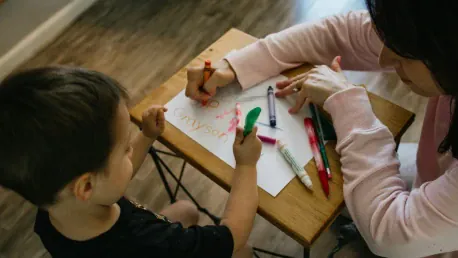The Washington Daily News article published on February 15, 2025, addresses a matter of significant concern among the residents of Aurora, North Carolina—the potential closure of their only school, S.W. Snowden Elementary. Understanding the implications of such a closure requires delving deep into various aspects: financial challenges, demographic trends, community impact, and responses from local authorities and residents.
Financial Challenges and Demographic Trends
Financial Status of S.W. Snowden Elementary
The focal point of the article is the financial status of S.W. Snowden Elementary, which was slated for discussion at the Beaufort County Board of Education meeting on February 3. The anticipation of this discussion drew several Aurora residents to the meeting, only for them to discover that the agenda item had been removed. This sudden change left the community uncertain about the future of their school, prompting concerns regarding whether the closure was a real possibility or merely a rumor.
The Board of Education, as per the statement released by the Aurora Richland Township Chamber of Commerce on February 2, was considering the closure of the school as part of wider measures to tackle budget constraints and declining student enrollments in the area. While no definitive decision had been made, the potential closure of S.W. Snowden was seen as a significant issue given its status as the only public school in Aurora. The community’s apprehension over the possible loss of a vital institution underscores the critical role that educational facilities play in small towns.
Enrollment and Historical Context
Board of Education Chairman T.W. Allen voiced that no one on the board wishes to close a school when mergers with other schools are not an option. According to Beaufort County Schools Superintendent, Dr. Matthew Cheeseman, S.W. Snowden—serving grades K-8—currently has 122 students and 15 employees. The historical context of the school adds another layer of complexity; besides the main building from the 1990s, the campus includes structures from the 1930s and 1950s, enriching the town’s heritage. The historical significance attached to these buildings not only represents the town’s past but also its cultural and social fiber.
Before any concrete steps can be taken regarding the school’s financial future, the Board requires projections from the North Carolina Department of Public Instruction regarding state funding allotments. One critical point of concern is North Carolina state law 2011-145, which dictates that should a school’s population fall below 100 students, the state would cease funding the principal’s salary, thus requiring county funding instead. This law adds another layer of financial complexity, raising additional concerns among residents who fear that inadequate funding could accelerate the school’s closure.
Community Impact and Responses
Transfer Options and Classroom Limitations
For current S.W. Snowden students, the option to transfer to neighboring schools like Chocowinity Primary School or Chocowinity Middle exists, contingent upon space availability. However, limitations imposed by state-regulated classroom sizes for K-3 students complicate this option, as seen when space was not available for some transfer requests. Parents are caught in a challenging predicament, weighing the potential benefits and drawbacks of transferring their children to other schools while facing uncertainty about classroom availability.
Dwindling student numbers continue to threaten S.W. Snowden. The introduction of school vouchers—opportunity scholarships—broadens the scope for students to attend private institutions, potentially diverting them from Snowden to nearby private and charter schools such as Arapahoe Charter School, Pamlico Christian Academy, Unity Christian Academy, and Washington Montessori Public Charter School. It is worth noting that this issue is not unique to Snowden, as the entire Beaufort County School district has faced a steady decline in student population, with projections indicating a continued downward trend. This domino effect from declining enrollment in public schools to increasing reliance on vouchers indicates a broader trend affecting the entire education system in the area.
Broader Implications for Aurora
Beyond student numbers, reduced student populations correlate to losses in state-funded teacher positions. Over the past six to seven years, the district has lost 53 such positions, with projections showing an additional seven losses for the 2025-2026 school year. This reduction in staffing affects the quality of education, decreasing the ability of schools to provide personalized and attentive learning experiences. Teachers face increasing workloads, and the loss of educators can diminish extracurricular and enrichment opportunities for students.
The broader implications of closing S.W. Snowden extend to potential adverse effects on the town of Aurora itself. Historical observations and studies such as those by Thomas Lyson, a sociologist at Cornell University, indicate that the closure of a school in a small rural village can lower housing values by up to 25% and widen income inequality. Schools serve as not just educational institutions but community anchors, contributing to both economic stability and social cohesion. In villages with schools, properties tend to have higher values, and there is greater access to municipal services like water and sewer systems. Schools also help cultivate a sense of community and cultural identity. Losing this critical institution could thereby unravel the social and economic fabric that binds the town together.
Recent Developments and Future Prospects
Economic and Social Challenges
Aurora has already faced significant losses. Southern Bank announced in January 2023 that its Aurora branch would cease daily operations in April. ECU Health’s closure of the nearest health clinic and the ten-year absence of the town’s only grocery store, Piggly Wiggly, which turned the town into a food desert, paints a bleak picture for residents who now rely on shops in Grantsboro or initiatives like the Ripe for Revival Mobile Market for fresh groceries. These developments highlight the growing challenges facing rural towns, where access to essential services is dwindling, exacerbating feelings of isolation and desolation.
Signs of Positive Change
The Washington Daily News article, dated February 15, 2025, highlights a critical issue affecting the residents of Aurora, North Carolina—the possible shutdown of their sole educational institution, S.W. Snowden Elementary. To fully grasp the consequences of such a closure, it is crucial to consider multiple factors: financial constraints, shifting demographic patterns, the social impact on the community, and the reactions from both local officials and the townspeople.
Financially, the school faces funding shortages that have made it difficult to sustain operations. This is compounded by demographic shifts, including a decline in the local student population, which undermines the justification for keeping the school open. The closure would not just be a loss of an educational facility but potentially the loss of a community hub, affecting social cohesion and local identity.
Local authorities are in a challenging position, balancing budgetary concerns with the need to provide essential educational services. Meanwhile, the residents of Aurora are voicing strong opposition, emphasizing how the school has been an integral part of their lives and community for generations. Public meetings and petitions have been organized as the community rallies to save their cherished institution.
The issue encapsulates broader themes of rural education struggles in America, reflecting the tension between economic realities and the need to maintain vital social structures in small communities.








